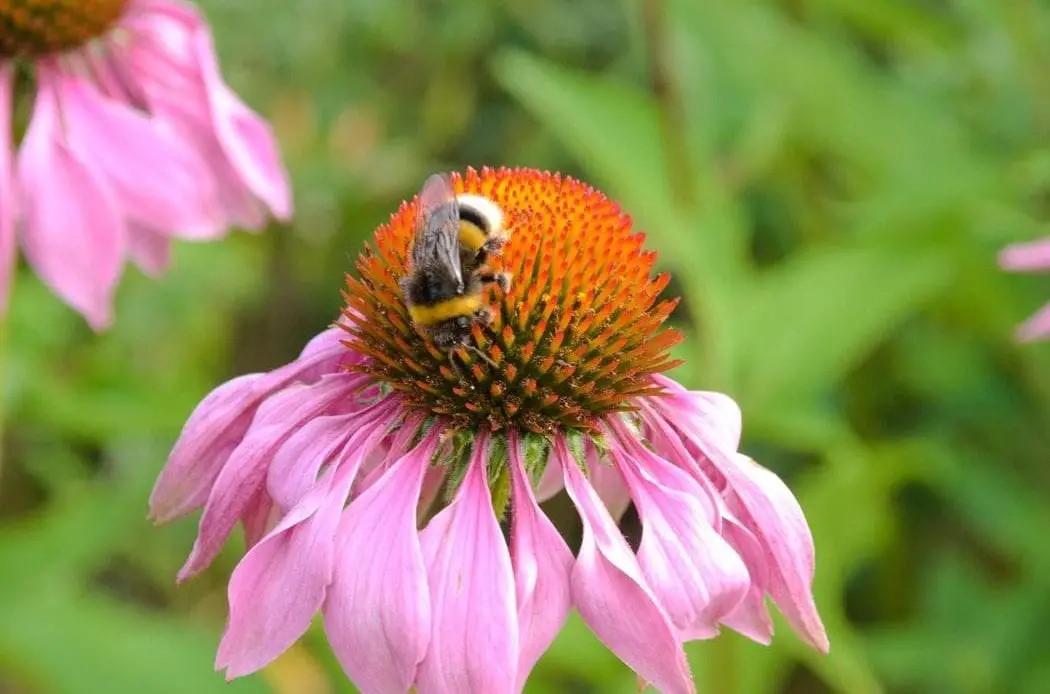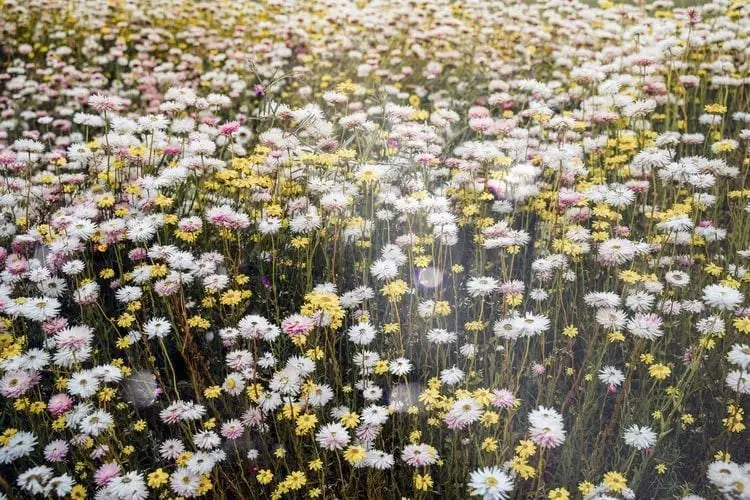
Flowers are one of the most beautiful creations of nature and have been used for centuries by humans to beautify their gardens and homes. Some flowers even have medicinal benefits and are used for reasons other than beautification. However, as vast as the natural world is, so are the number of flowers that exist in it. In that sense, any enthusiast needs to accustom himself/herself to the myriad kinds. In this article, a closer look will be given at flowers that start with E and a short synopsis about their benefits and characteristics will be gleaned. Owing to the fact that there are numerous flowers that start with E, the most pertinent and famous ones have been included in this article. Please continue reading to find out more about them.
Echinacea
Echinacea also goes by the name of purple coneflower and is widely popular all over the world. Echinacea is famous for its medicinal benefits, primarily in the treatment of flu or the common cold. However, the medicinal flower is also known to be beneficial while treating inflammation, pain, migraines, and myriad other health conditions. Belonging to the family of daisies, Echinacea is mainly found in Northern America. The most common place to find this flower is in the open prairies of the native North American plains. Some of the active ingredients found in Echinacea include phenolic acid, caffeic acid, alkamides, polyacetylenes, and rosmarinic acid, amongst others. While there are nine different species belonging to this flower family only three, namely the Echinacea angustifolia, Echinacea pallida, and Echinacea purpureaare used for medicinal purposes.
English Bluebell
English Bluebell is a very famous flower that also goes by the name of Witches’ Thimbles and Lady’s Nightcap, amongst others. Found primarily in the UK, hence the name, English Bluebells is protected by the law and it is a crime to uproot or destroy a bluebell. Usually found to be blooming during the spring, this flower has been voted the best flower in England and is highly loved by all Englishmen. It has come to become a part of their identity.
Colonies of bluebells take quite a while to develop. Flowering from seeds might take as long as 5-7 years for a full-blown bluebell colony. It is for this very reason that the law protects them. Once a colony is damaged, it can take many years for the colony to rejuvenate. Even crushing the bluebell’s leaves can cause the plant to die, owing to the flower not being able to create energy for sustenance through photosynthesis. They are often confused with the Spanish Bluebells, which are an aggressive cousin of the British ones, and grow abundantly in a short span of time.
Emilia
Also known to many by the name of Tassel Flower, Emilia belongs to the Asteraceae family. The genus consists of a total of 100 species or more, and they can usually be found in the tropical regions. With an abundance in the Old World, which consists of Asia, Europe, and Africa, Emilia is extremely beautiful to look at. The flowers in this plant bloom usually during the summer and the autumn. They are also known as Tassel flower owing to the tassel-like flowers that bloom on their slender stems. The bright color of Emilia is one of its most highlighting features. Irrespective of whether the flower is red, orange, or purple, it is certain to adorn a bright shade. These flowers are most famously used for fresh-cut flower bouquets and container gardens.
Epiphyllum
Belonging to the Cactaceae family, Epiphyllum is an epiphytic plant, which means that it grows atop another plant to gain support. The genus of this plant contains as many as 15 species, and they can usually be found in the subtropical and tropical regions of America. The most highlighting features of this plant include its fragrance, color, and size. They also go by the name of Orchid Cactus. Being a cactus, Epiphyllums can be found with stems but do not have any leaves on them. Rock crevices and gaps found in rock crevices are the most common places to look for an Epiphyllum.
They are one of the few flowers that starts with E that can be found abundantly in the wild as well as inside the house, grown using hanging baskets. Epiphyllum is the genus that is the parent of one of the most expensive flowers that the world knows. The Epiphyllum oxypetalum, also known as the Queen of the Night or Kadupul is hugely expensive and belongs to the same family as this beautiful cactus.
Erica
Erica, also known by the name of Heather, is a flowering plant that belongs to the family of Ericaceae. The plant’s genus is known to have as many as 857 species. Also known as the winter/ spring heather, this flower can be distinguished from the summer heather (Calluna) by its distinctive name. Its origins can be traced to the Mediterranean regions of Europe, and can also be found in Madagascar and South Africa. While it can be hard to maintain Erica inside a room, proper maintenance and pruning can still help this perennial flower to blossom abundantly. The flower is known to have a low growth rate and almost 6 hours of direct sunlight every day to remain healthy.
Erigeron
Erigeron is also known by the name of Seaside Daisy and can be natively found in Oregon’s and California’s coastal regions. Having a scientific name of Erigeron Glaucus is flower is perennial and does not grow bountifully. However, it is immensely beautiful and has a dazzling cushion of lavender-pink, semi-double flowers that host a yellowish center. This flower that starts with E is known to bloom during the months of mid-spring and till the late summer. The blossomed flower can be seen on top of a leathery green-blue thick foliage. It is best to harvest them in butterfly gardens or coastal gardens. Crevices and rock gardens are also ideal growing spots for the Erigeron.

Echinops
Another name for Echinops is the Small Globe Thistle. The word Echinops has been derived from the Greek word echinos that means ‘hedgehog’. The ‘ops’ in the word stand for appearance. Both of them together represent a hedgehog type of appearance that the flower sports. Echinops has been used throughout history for its anthelmintic properties, as it can ably kill parasitic worms. Breastfeeding women are also known to have used Echinops owing to its galactagogue properties, aiding in the increased secretion of milk. However, modern conventional medicine does not use this flower as abundantly as before.
Echeveria
Echeverias are succulents that belong to the Crassulaceae family and are most commonly found in Central America. There are as many as one-hundred different species that belong to the genus. One of the most prominent features about this plant and its bloom is the beauty and magnificence such a sight propagates. The magnificent bloom of this flower that starts with E is only complemented by its bright-colored leaves and interesting fleshy features. A tall stalk that arches and contains several flowers that bloom to reveal a glorious bell-shape is what makes the Echeveria distinct. It is also known by the name of Hen and Chicks.
Eryngium
Eryngium is a flower that also goes by the name of Sea Holly and the genus is known to contain as many as 250 species within it. Belonging to the Apiaceae family, this flower is most commonly found in the Mediterranean and Europe. There are some species in this genus that produce perennial flowers, but exceptions exist in the form of annual flowers as well. Their distinctive characteristics include thistle-like attractive flower-heads that are enveloped inside strong stems or bracts of silvery-blue color. These flowers are extremely fond of the sun and usually bloom during the summer seasons. They are known to be a huge attraction for bees and butterflies alike.
Euphorbia
The most common name used for designating Euphorbia is Spurge. The flower’s genus is a huge one with greater than 2000 species being a part of the same. Belonging to the Euphorbiaceae family, this flower that starts with E can be found all over the world, with the only exception being Antarctica. The beauty of this unique genus lies in its extraordinary diversity, with each of the flowers belonging to the genus having distinct and different characteristics specific to that particular species.
The genus is home to both annual and perennial flowers, shrubs, as well as trees that have the capability of growing to a height of 20 meters. Many of these tree variants of the Euphorbia are also succulents and can withstand rigorous drought conditions. The most distinct qualities that make Euphorbia extremely popular are their unique and refreshing floral structures. These flowers are adorned with rich and bright colored leaves. Some of the Euphorbia flowers also happen to be unusual and grow to form a cluster or inflorescence that is more popularly known by the name of ‘cyathium’.
